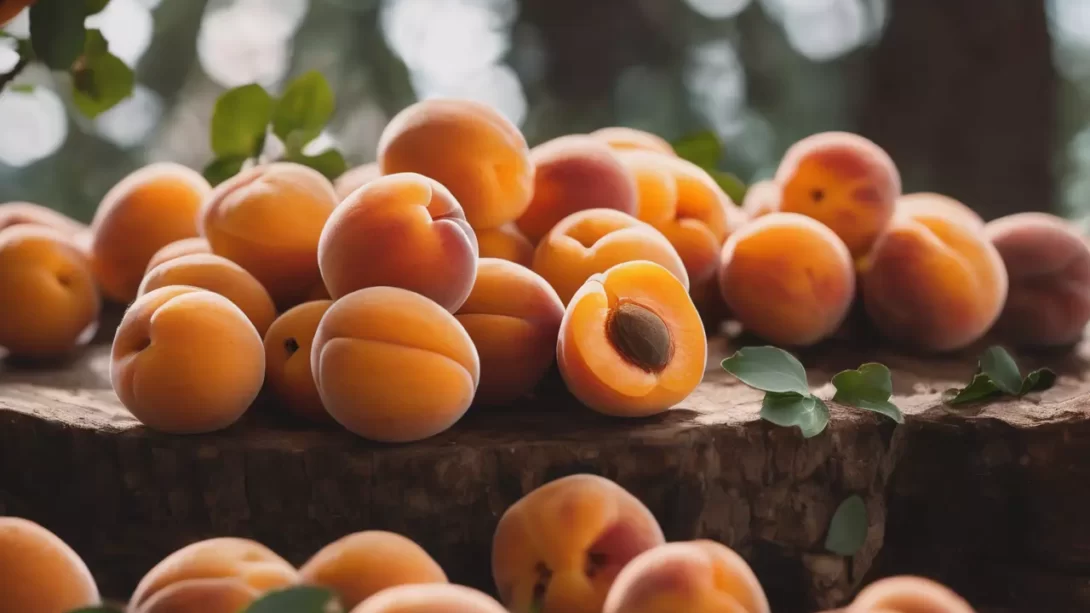Apricots are a cherished fruit known for their sweet, tangy flavor and velvety skin. Originating from China, apricots have been cultivated for thousands of years and have become a staple in various cuisines worldwide. This article aims to provide a comprehensive guide to understanding apricot season, crucial for both commercial growers and home garden enthusiasts.
The cultivation of apricots spans across continents, adapting to diverse climatic conditions. This adaptability has led to a range of apricot varieties, each with its own unique taste and texture. Knowing when apricot season occurs is key to enjoying these fruits at their peak ripeness and nutritional value.
The Growth Cycle of Apricots
The growth cycle of apricots is an intricate process that dictates when the fruit will be ready for harvest. Apricot trees go through several stages: a period of dormancy during the colder months, followed by a blooming phase in early spring, fruit set, and finally, fruit ripening in late spring to early summer.
During dormancy, the trees conserve energy and prepare for the upcoming growing season. The blooming stage is a critical time, as the blossoms set the stage for fruit development. The timing of these stages can vary depending on climatic conditions and the specific variety of apricot tree.
Climate and Its Impact on Apricot Season
Climate significantly influences the apricot season, particularly the timing and quality of the fruit. Apricot trees require a period of cold temperatures during dormancy to stimulate proper blooming and fruit set. However, they are also susceptible to late spring frosts, which can damage blossoms and reduce fruit yield.
In warmer regions, apricot trees may bloom earlier and have a longer growing season, leading to an earlier harvest. In contrast, cooler climates might see a later bloom and a shorter window for fruit development. This variability means that apricot season can differ significantly from one region to another.
Typical Apricot Harvesting Season
Generally, the apricot harvesting season occurs in late spring to early summer. In the Northern Hemisphere, this typically means apricots are ready for harvest from late May to early July. However, this timeline can shift based on local climate conditions and the specific apricot variety.
Some early-ripening apricot varieties can be harvested as early as late spring, while later varieties might not be ready until mid-summer. Understanding these varietal differences is essential for planning the harvest and ensuring the best quality fruit.
The apricot season is relatively brief compared to other fruits, making it important to harvest the fruit at the right time to enjoy its full flavor and nutritional benefits. In the next sections, we will delve into how to recognize ripe apricots and the factors influencing their growth and ripening.
Recognizing Ripe Apricots
Identifying when apricots are ripe and ready for harvest is crucial for enjoying them at their best. Ripe apricots are typically firm but yield slightly to gentle pressure. They should have a uniformly golden-orange color, with perhaps a hint of red blush, depending on the variety. The skin should be smooth and slightly soft, and the fruit should detach easily from the tree when lifted and twisted gently.
The aroma is another indicator of ripeness; ripe apricots will have a sweet and fragrant scent. If the fruit is still hard, lacks fragrance, or is greenish in color, it likely needs more time to ripen. It’s important to note that apricots do not continue to ripen significantly after being picked, so determining the right time to harvest is key to enjoying their full flavor.
Factors Influencing Apricot Season
Several environmental factors can impact the timing and quality of the apricot harvest. Temperature fluctuations, especially during the blooming period, can affect fruit set and development. A warm, dry spring is ideal for apricot trees, as excessive moisture can lead to fungal diseases and poor fruit quality.
The tree’s age and health also play a significant role. Young apricot trees, typically those under three to four years old, may not produce fruit or have limited yields. Properly matured and well-maintained trees are more likely to produce a bountiful harvest. Regular pruning, fertilization, and pest and disease management are critical in ensuring the health and productivity of apricot trees.
Caring for Apricot Trees During Harvest Season
Proper care of apricot trees during the harvest season is essential for maximizing fruit yield and quality. Watering is crucial, especially as the fruit begins to swell and ripen. The soil should be kept moist but not waterlogged to prevent root rot and other water-related issues.
Pruning is important for maintaining tree health and ensuring good fruit production. It helps improve sunlight penetration and air circulation within the canopy, which is essential for fruit ripening and reducing disease risks. However, heavy pruning should be avoided during the harvest season as it can stress the tree and impact fruit development.
Fertilization should be done with care, ideally before the blooming period. A balanced fertilizer can support healthy growth and fruit production. It’s important to follow recommended guidelines for fertilization to avoid overfeeding, which can lead to excessive foliage growth at the expense of fruit.
Extending the Apricot Season
While the natural apricot season is relatively short, there are ways to extend the enjoyment of these fruits. One method is by planting a variety of apricot trees that mature at different times. Early, mid, and late-season varieties can provide a staggered harvest, prolonging the availability of fresh apricots.
Preservation is another effective way to extend the apricot season. Drying is a popular method, as dried apricots retain much of their flavor and nutritional value. Canning and freezing are also viable options. Canned apricots can be used in desserts or as compotes, while frozen apricots are excellent for smoothies or baking. These methods allow you to enjoy the taste of apricots year-round.
Conclusion
Understanding the apricot season is essential for anyone looking to grow or enjoy these delightful fruits. From recognizing the signs of ripeness to providing the right care during the harvest season, each step plays a crucial role in ensuring a bountiful yield and high-quality fruit.
The apricot season, though brief, offers a window into the beauty and bounty of nature. By taking the time to understand and care for apricot trees, gardeners and fruit enthusiasts can reap the rewards of their labor in the form of delicious, home-grown apricots. Whether fresh, dried, canned, or frozen, apricots provide a versatile and nutritious addition to a variety of dishes, making them a valuable fruit to cultivate and enjoy.
As each season comes and goes, remember that the cycles of growth and harvest are opportunities to learn and improve. With each year, you can refine your techniques and deepen your understanding, leading to even more successful apricot seasons in the future.




